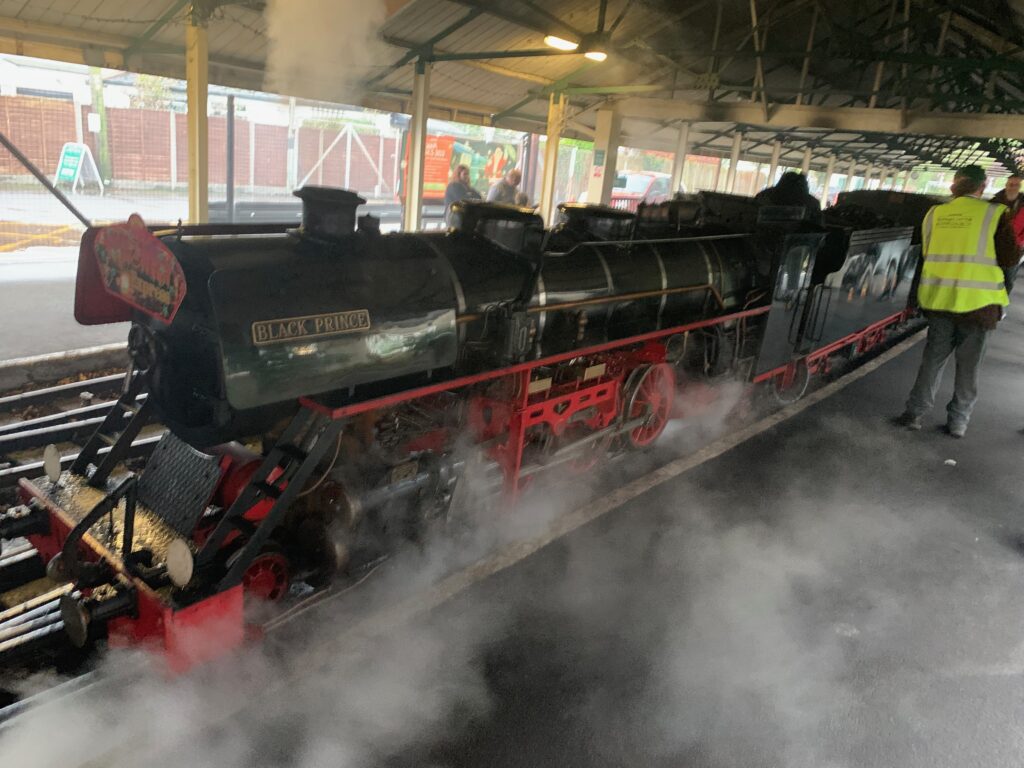
For my train nerd friends, I recently took a ride on the Romney, Hythe & Dymchurch Railway, a 15 inch gauge line in the south of England. Join me for the ride!
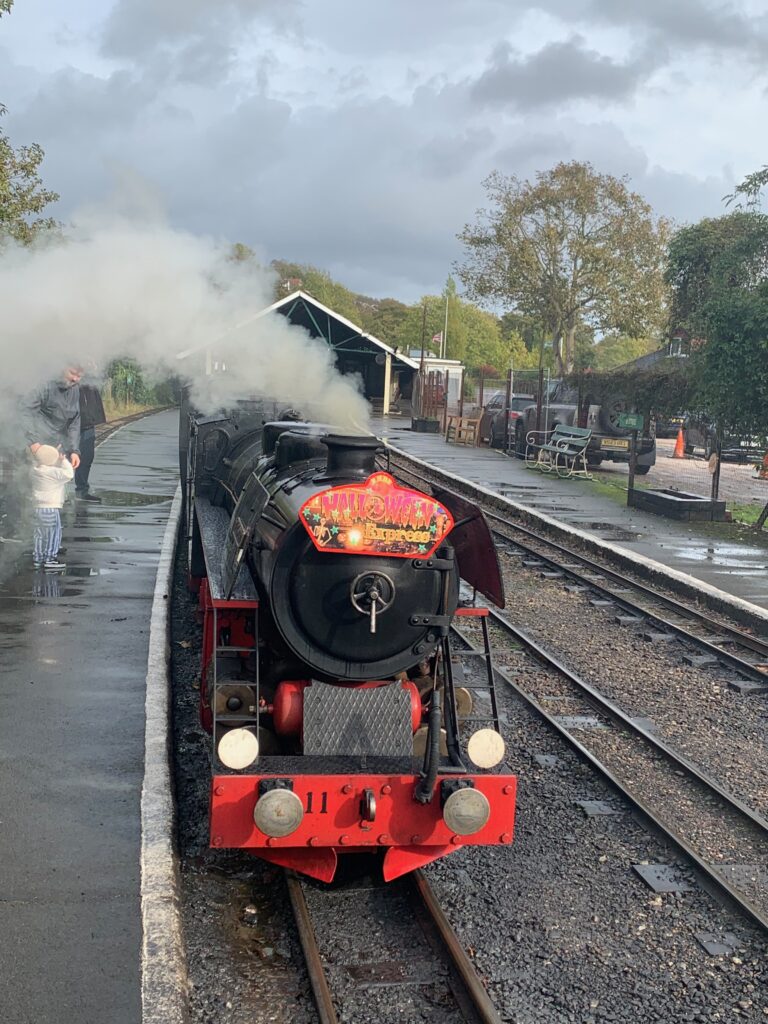
The Railway along the coast of Kent, England opened in 1927, and remains a beloved heritage line today.
Founded by millionaire racing drivers, it has survived depression, war, and closures of many other railways to become a key attraction, maintaining its vintage charm and allure for rail enthusiasts, tourists, and local residents alike. I have wanted to ride on it since I was seven.
Today, it’s home to 11 steam locomotives and two diesel engines. All the trains are one-third of the size of a regular train and run on a 15-inch gauge track. A regular British train use the standard gauge, which is a track width of 4 feet 8 and 1/2 inches (about 143.5 centimetres).
Journey through Historic Towns and Seaside Scenery
The trains take one hour and five minutes to travel the 22-kilometre (13.5 miles) route connecting six stations.
- Hythe Station
I started at Hythe, a nice coastal town, west of Folkestone. This terminus station has three platforms, a gift shop. a cafe and toilets. Buses stop out the front.
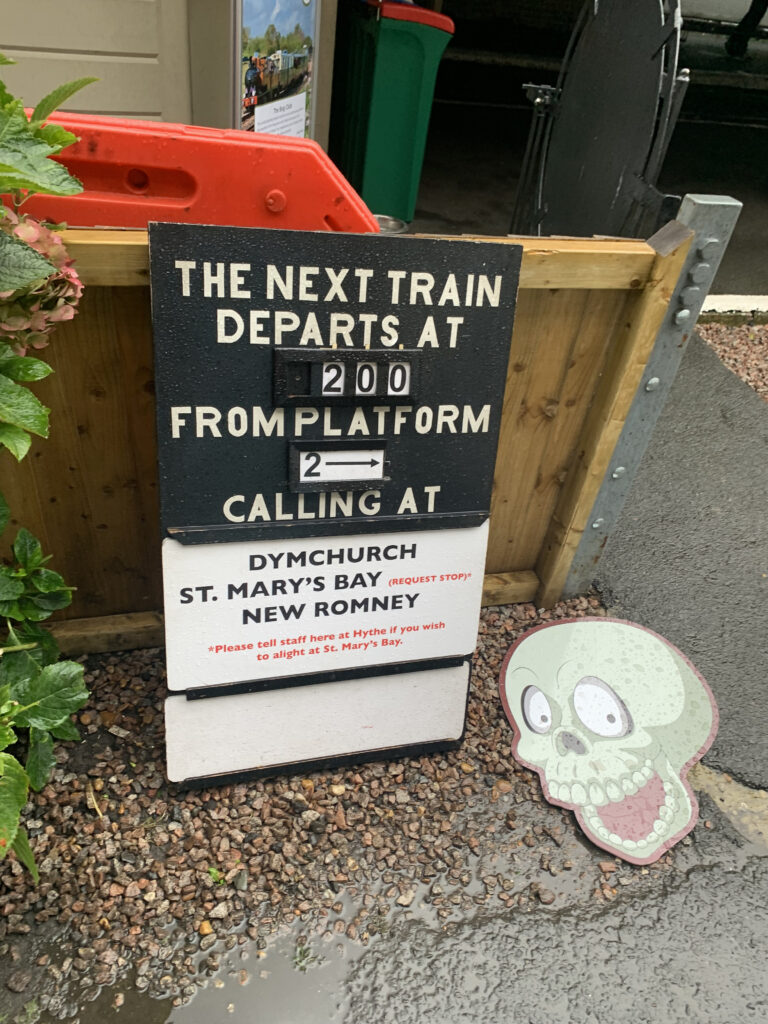
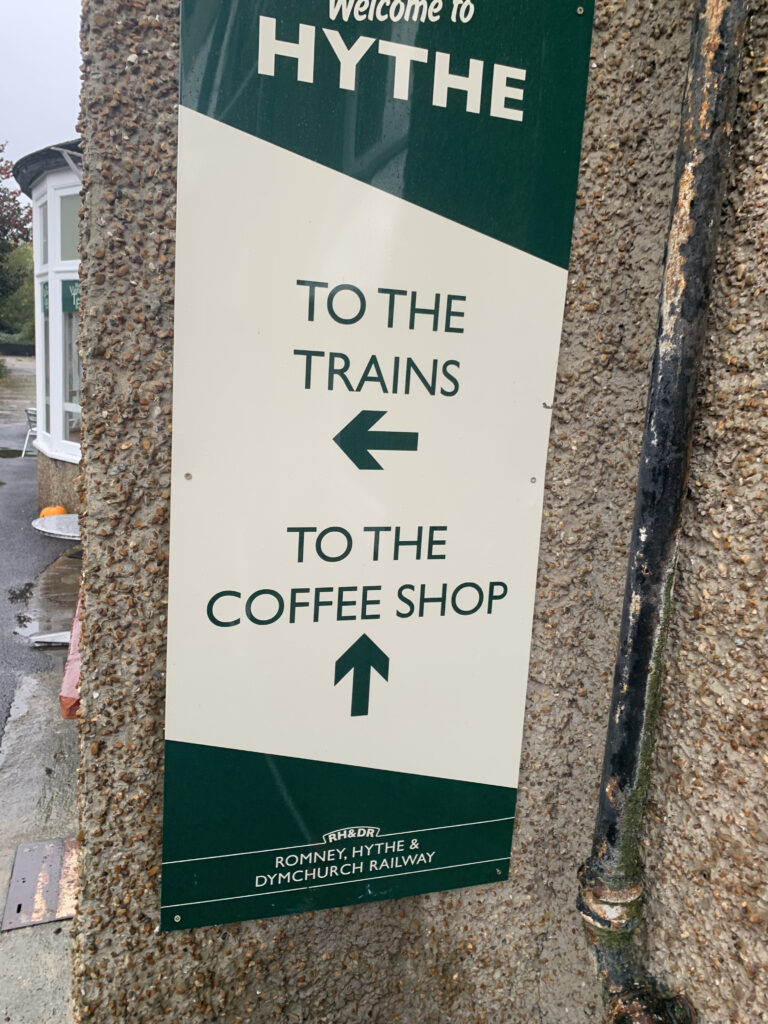
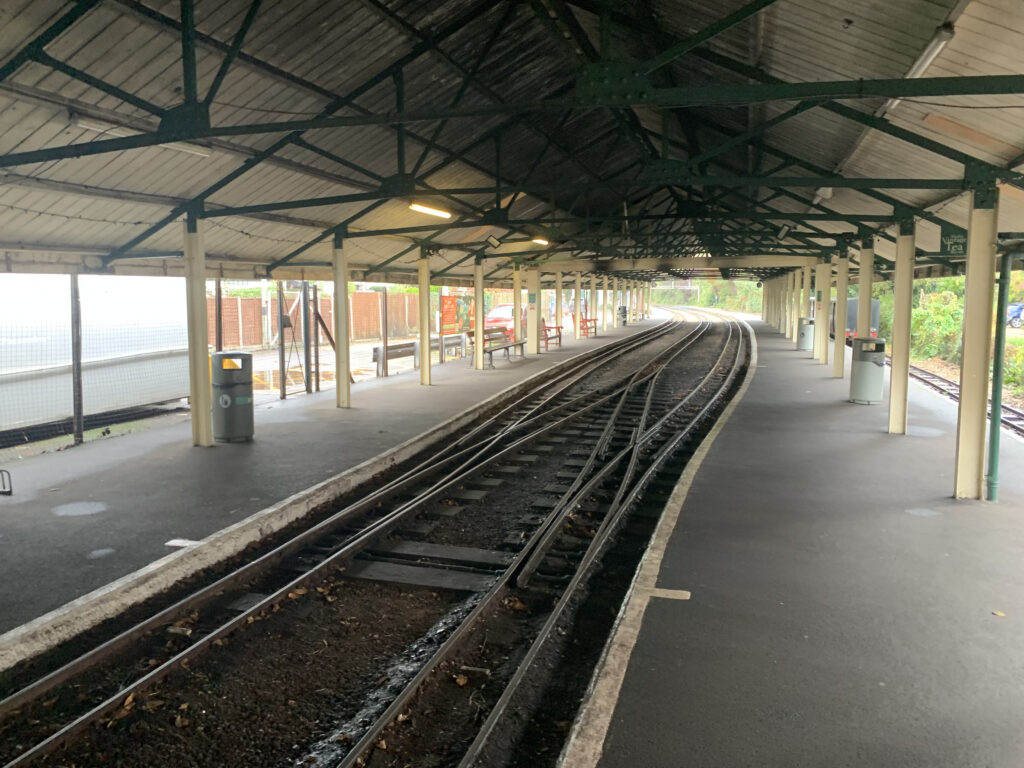



Hythe station is next to the 1809 Royal Military Canal, built as a defensive measure against a possible invasion by Napoleon Bonaparte. It runs from Seabrook near Folkestone to Cliff End in East Sussex, stretching over 45 kilometres (28 miles) and is now a nature sanctuary with lovely walking paths and benches to sit and watch the water, ducks and other birds.
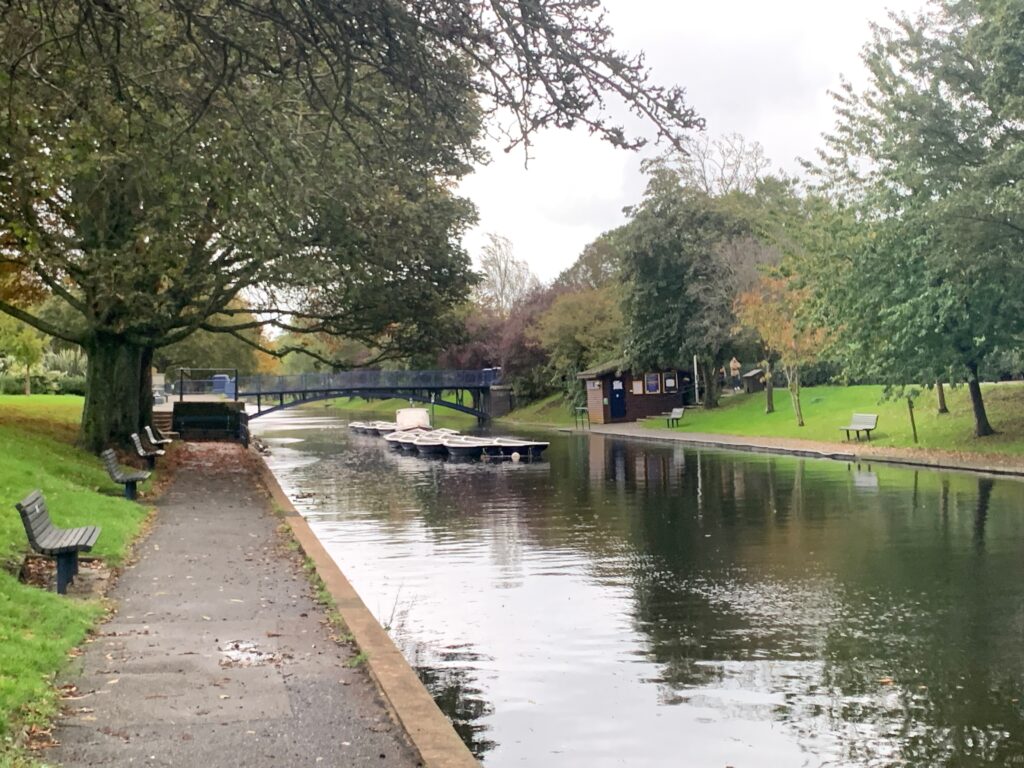
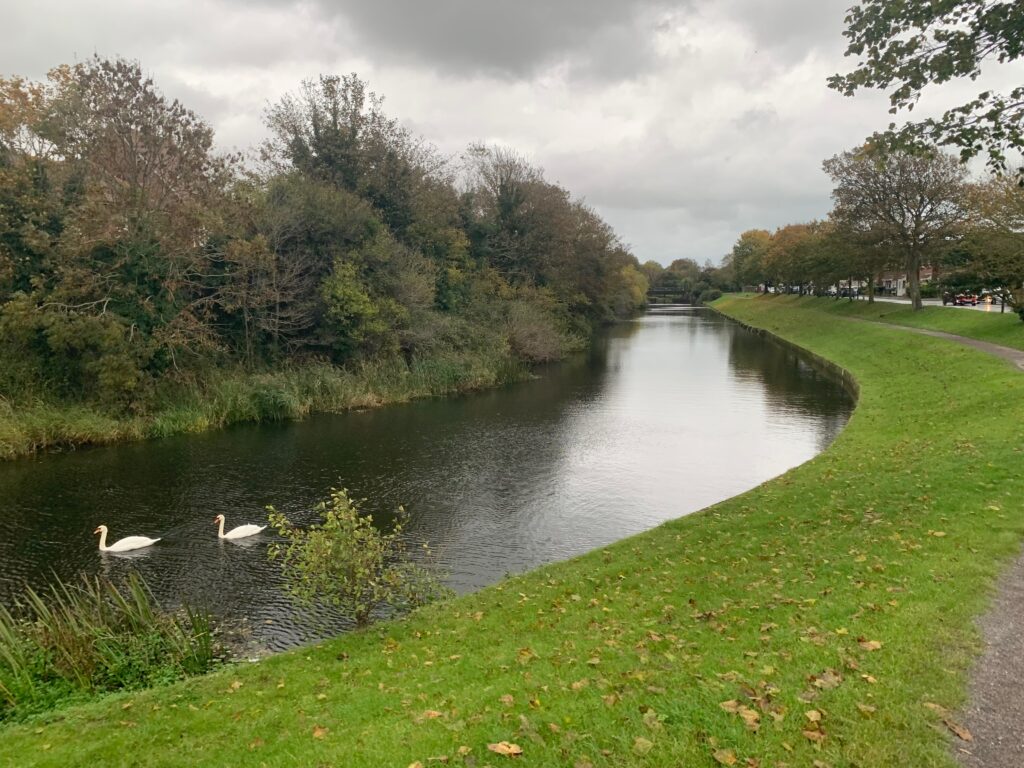
- Dymchurch Station
After a scenic journey of 16 kilometres (approximately ten miles) lasting about 20 minutes, the train arrives at the seaside station of Dymchurch. Often, the trains running in each direction are timed to stop here at the same time, making it possible for passengers to switch directions.
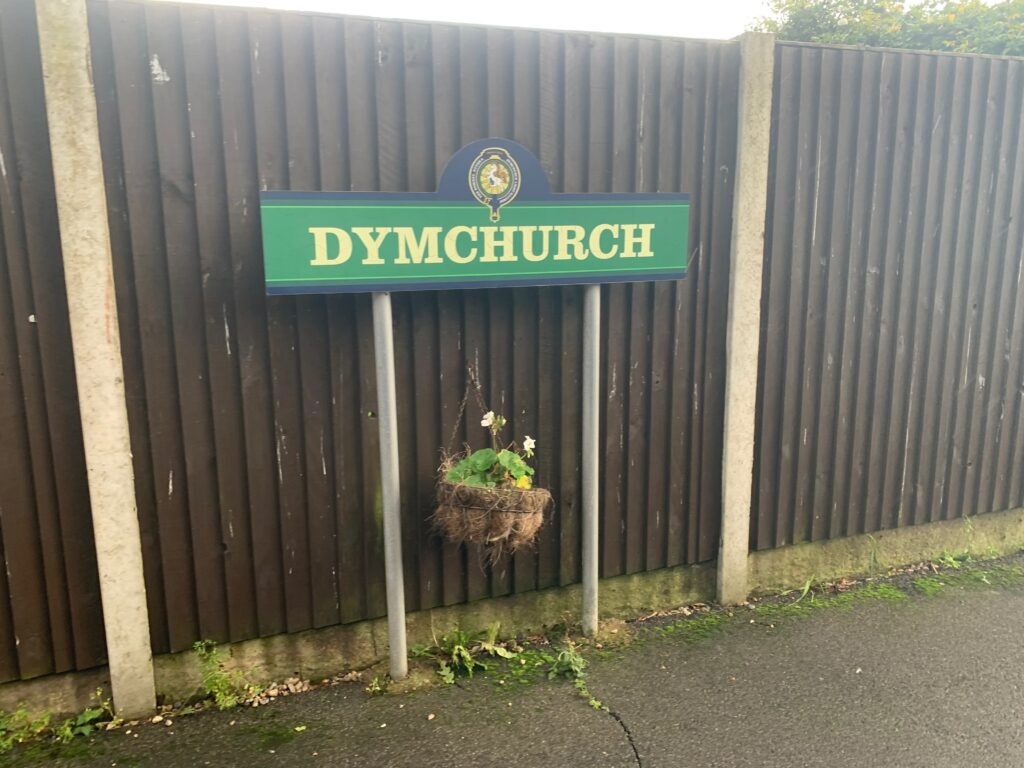
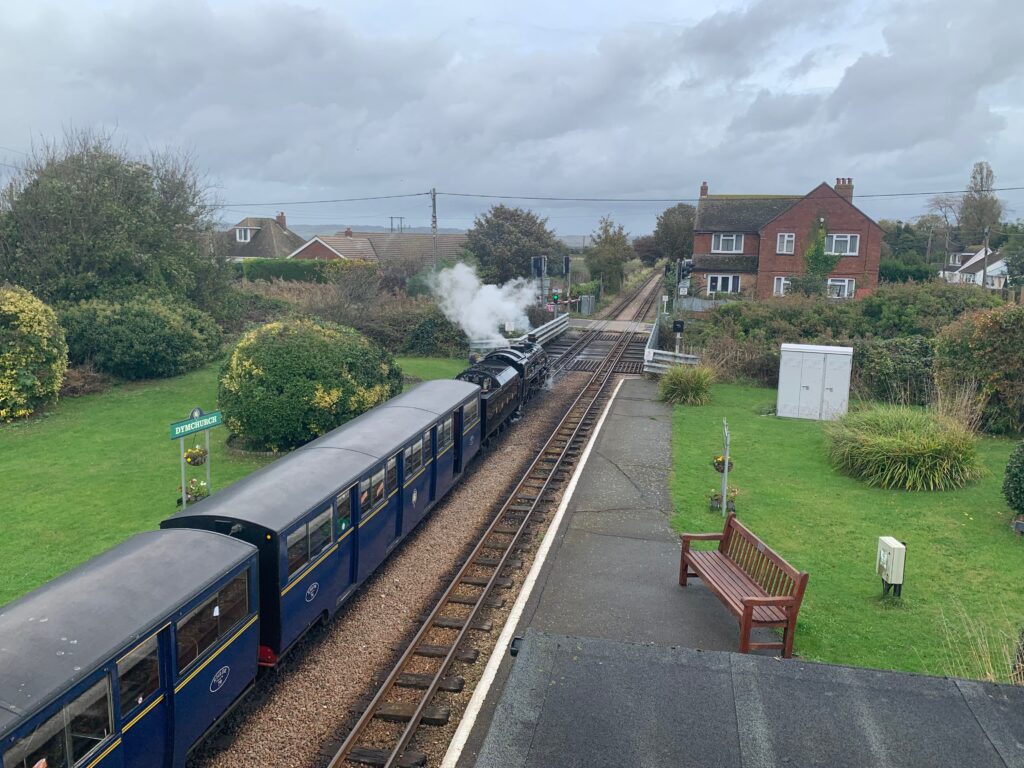
The town itself is close to the station and offers a picturesque view of the English Channel and is renowned for its sandy beaches, and a British style amusement park.
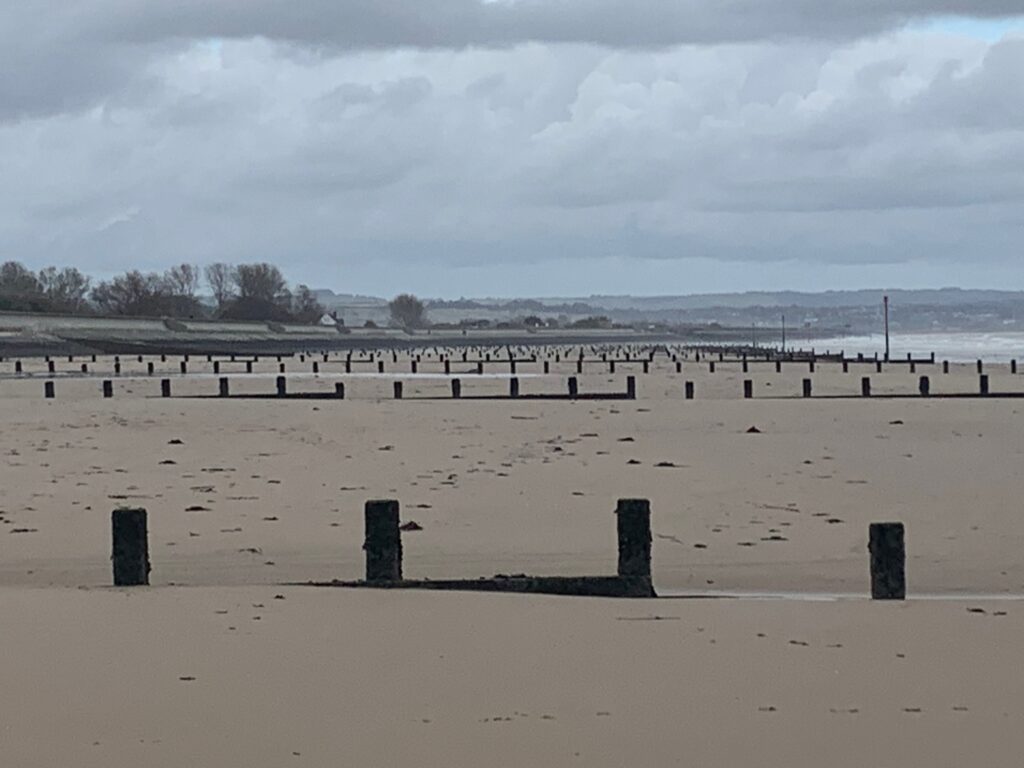
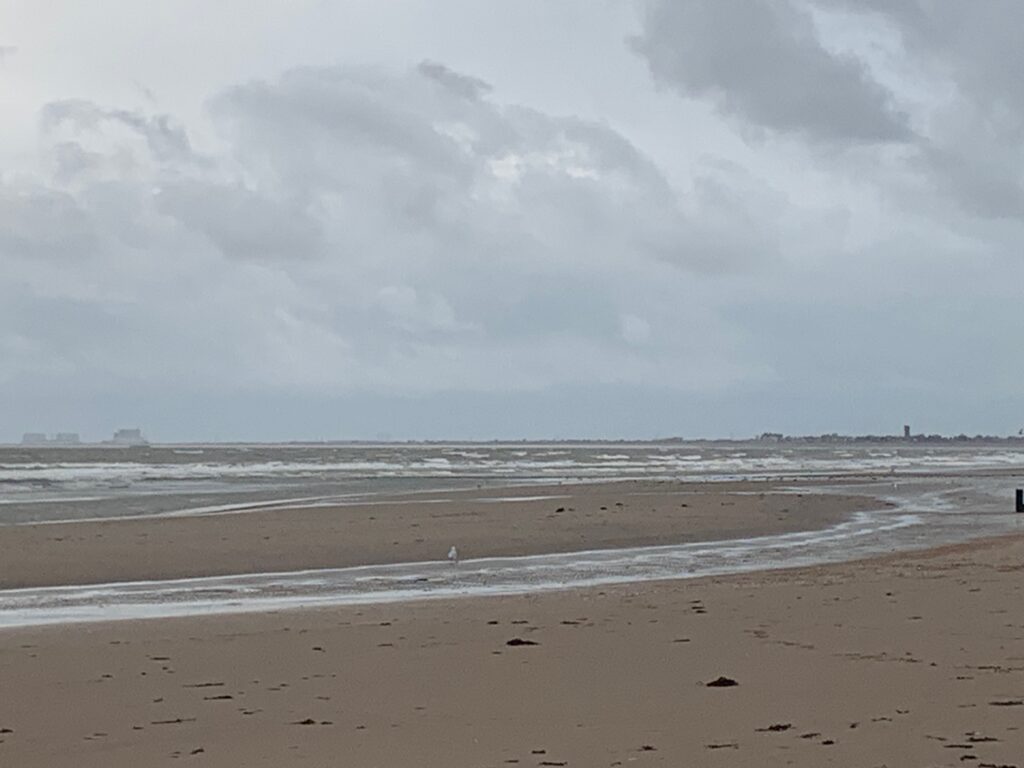
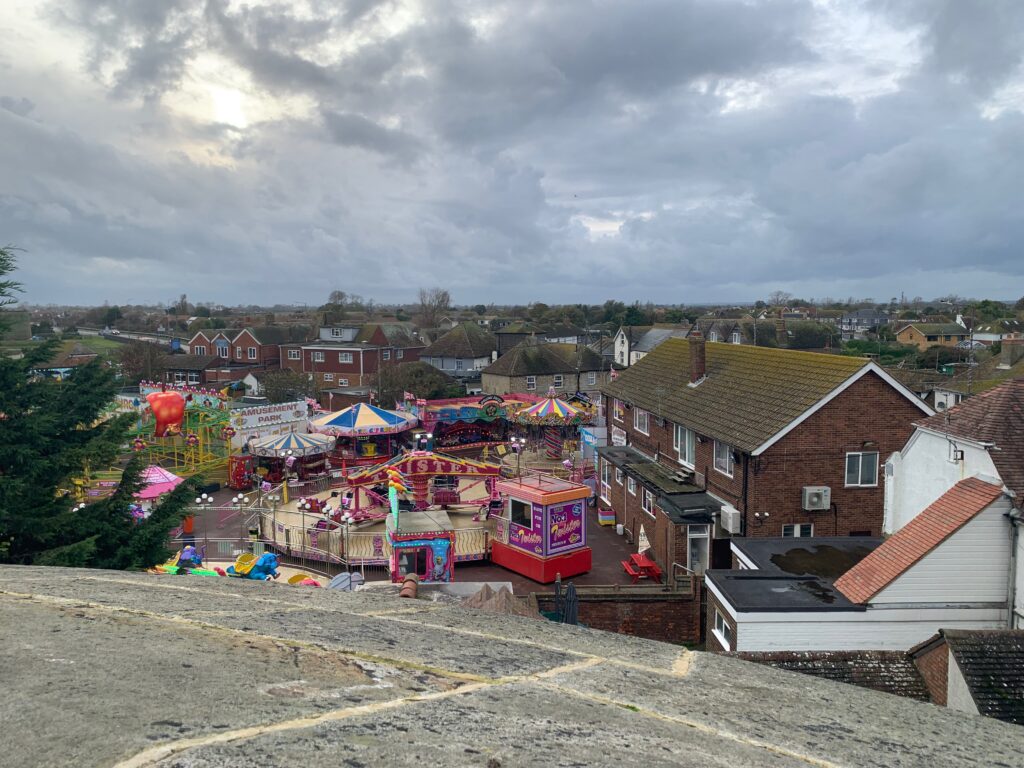
I was drawn to a historic defensive tower, the Dymchurch Martello Tower, positioned just within the protective sea wall. Built as part of a network of towers ti stop Napoleon, it was never actually used.I had the good fortune of enjoying a free tour of the tower and climbing to its roof, where a cannon still points at France! This tower is the last one left intact.
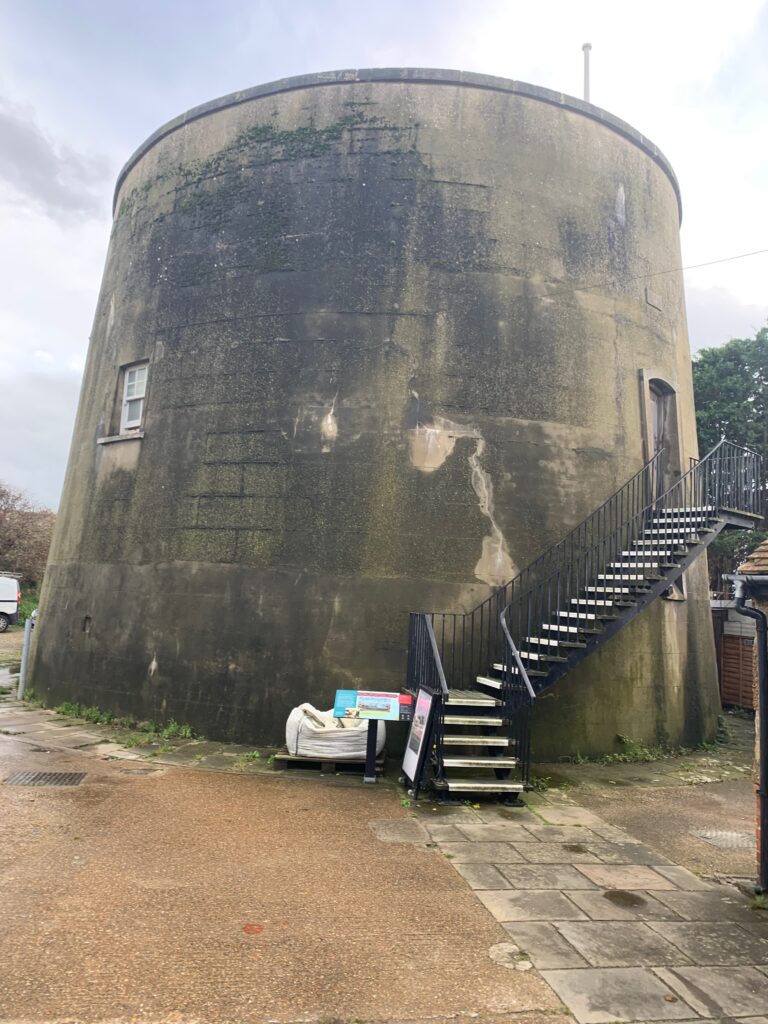
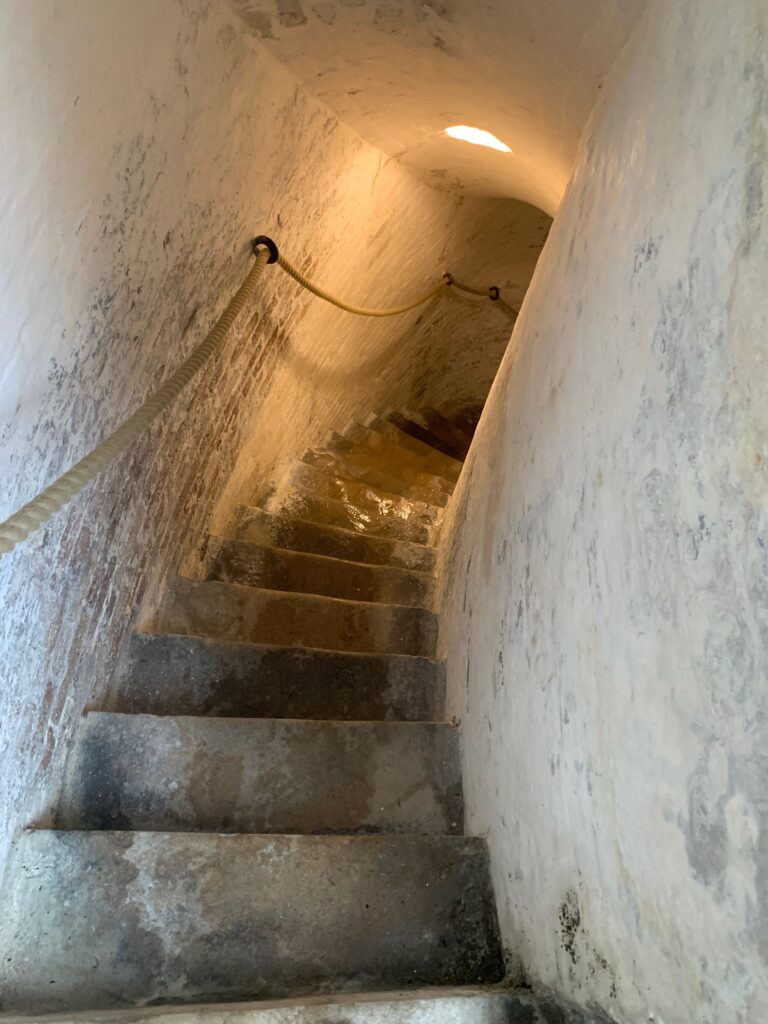
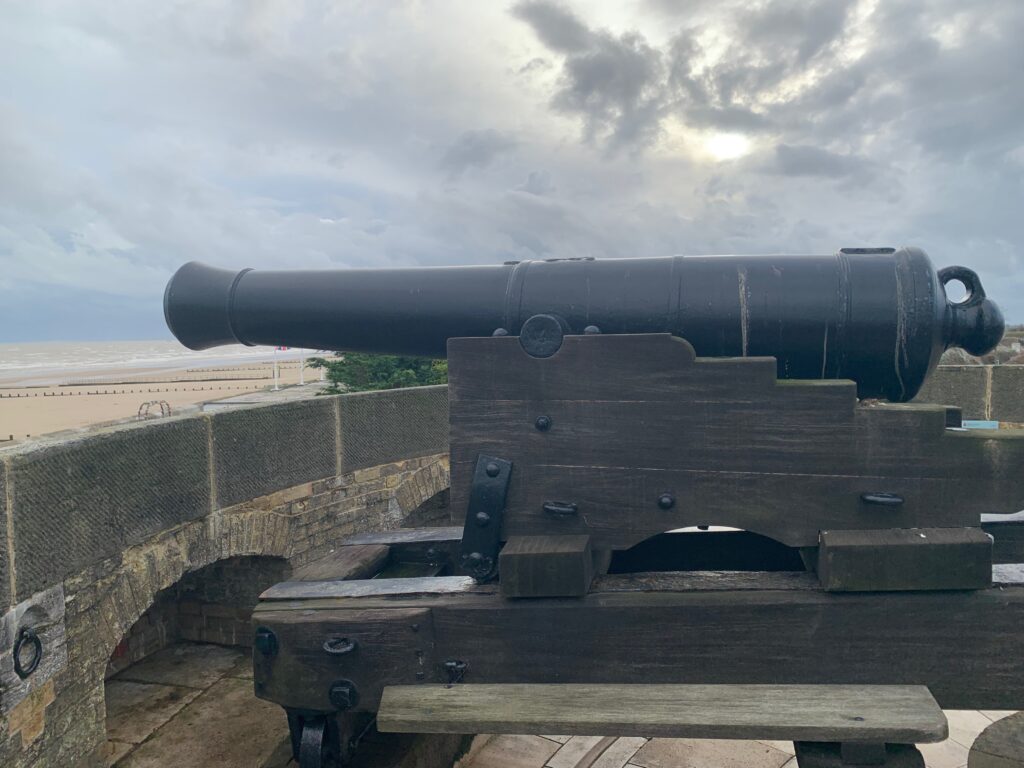
- St Mary’s Bay
Three kilometres (two miles) and five minutes further on, is “this request stop”. No one boarded or left the train in either direction on the day I rode on the route and we breezed through at a good speed.Te station gets used in the peak summer months for campers and trippers.
New Romney Station
Approximately 2.4 km (1.5 miles) is the most substantial station on the route.
It served as the railway’s inaugural stop and today, most of the railway’s essential day-to-day activities are centred here with engine and carriage sheds, workshops, and the permanent way depot.
There is also a model railway and a small museum here. A rock garden and model lighthouse, house the ashes of Captain Howey, one of the founders of the railway. His house is also next to the station.
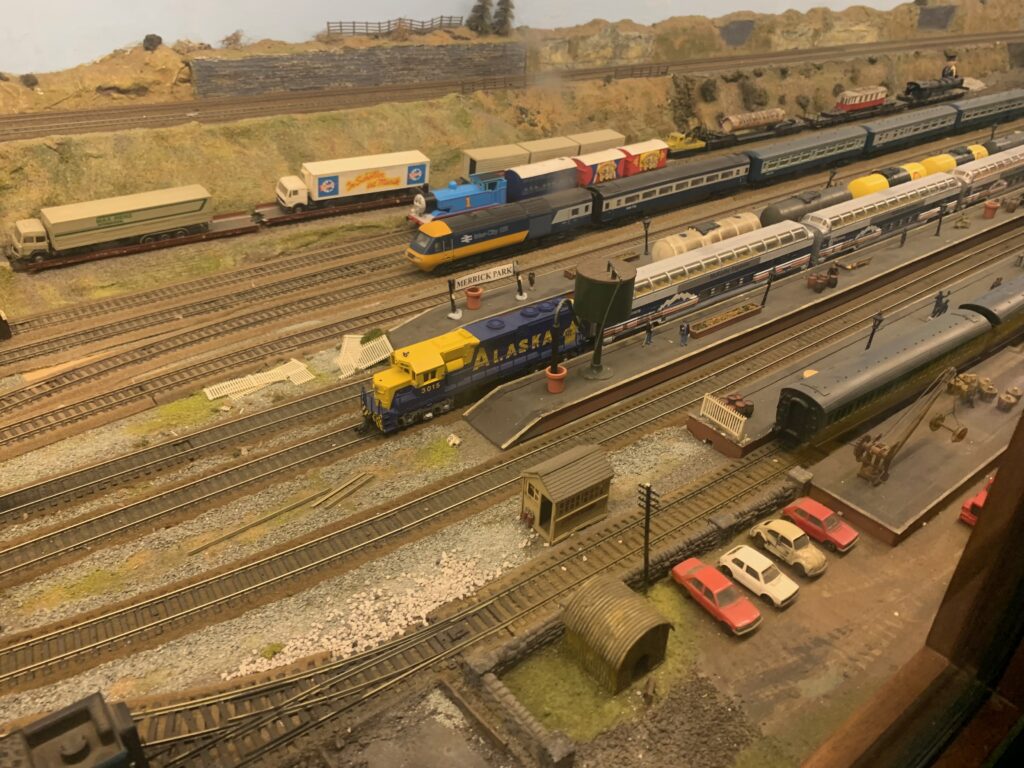
The station, underwent substantial changes when the line was extended in 1928.
- Romney Sands Station:
The first station on the extension is Romney Sands, 2.4 km 1.5 miles along. It is usually considered a brief stop, offering access to the Romney Sands Holiday Park and the adjacent beach. Often a request stop.
.
- Dungeness Station:
The trip frequently extends the approximately 5.6 km (3.5 miles) to the Dungeness Station. The line was flooded the day I came so the trains didn’t stop. I was disappointed because I had hoped to see the distinctive landscape, old lighthouse, and Dungeness Nuclear Power Station.
Booking
To purchase tickets for the Romney, Hythe & Dymchurch Railway:
- The railway’s official website typically offers an online booking system. Visitors can select travel dates, and the specific journey they wish to embark on. it’s advisable to book in advance, especially during peak tourist seasons or for special events to secure your preferred travel times and seating arrangements. Some of the services were booked out the day I rode
- At the Station: Tickets can also be purchased directly at the station or at the ticket office before boarding the train.
- Third-Party Sellers: Occasionally, tickets are available through third-party sellers or tour operators.
Food
Food is available at Hythe and New Romney station cafés and at the Souvenir stand at Dymchurch station. There are no shops next to the stations. Dymchurch, which is a short walk away, has a small Tesco Express, several fish and chip shops, plus a couple of tea rooms.
Getting There
Visitors can reach it via the M20 motorway if travelling by car.
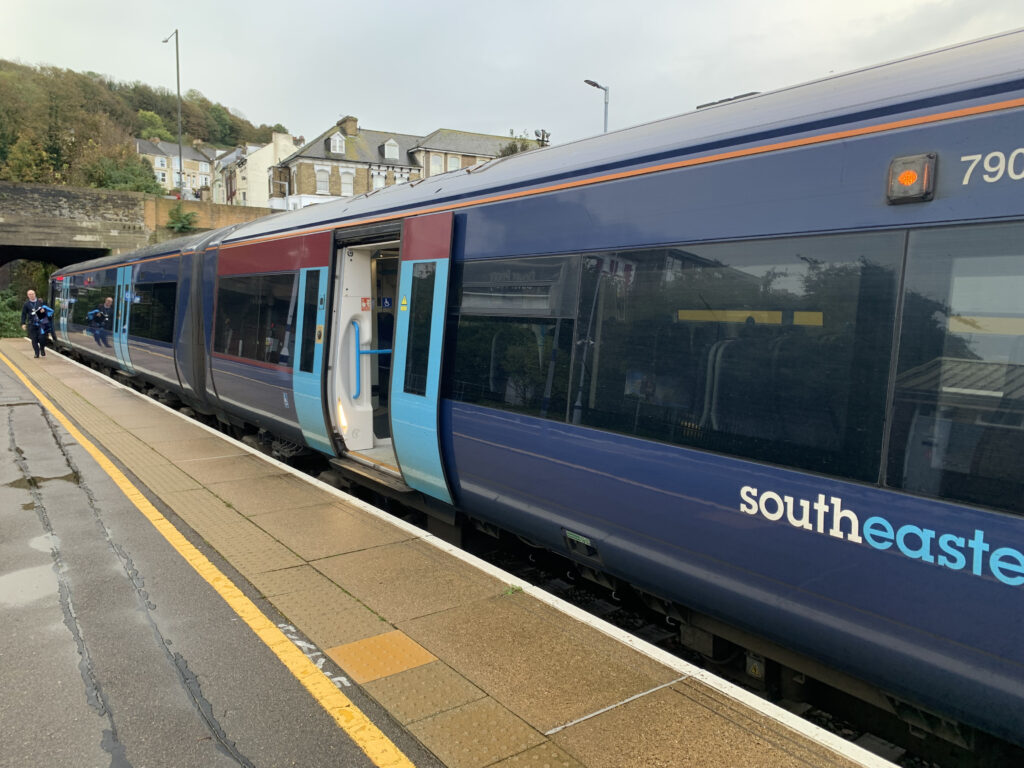
If using public transport, there are nearby bus services from Folkestone. West and Folkestone. Central and Devon Priory Railway stations. All those stations offer trains to London.
Overall
My day met the expectations I’ve carried since I was seven! Both adults like me and excited new young fans were present, adding to the fantastic experience!
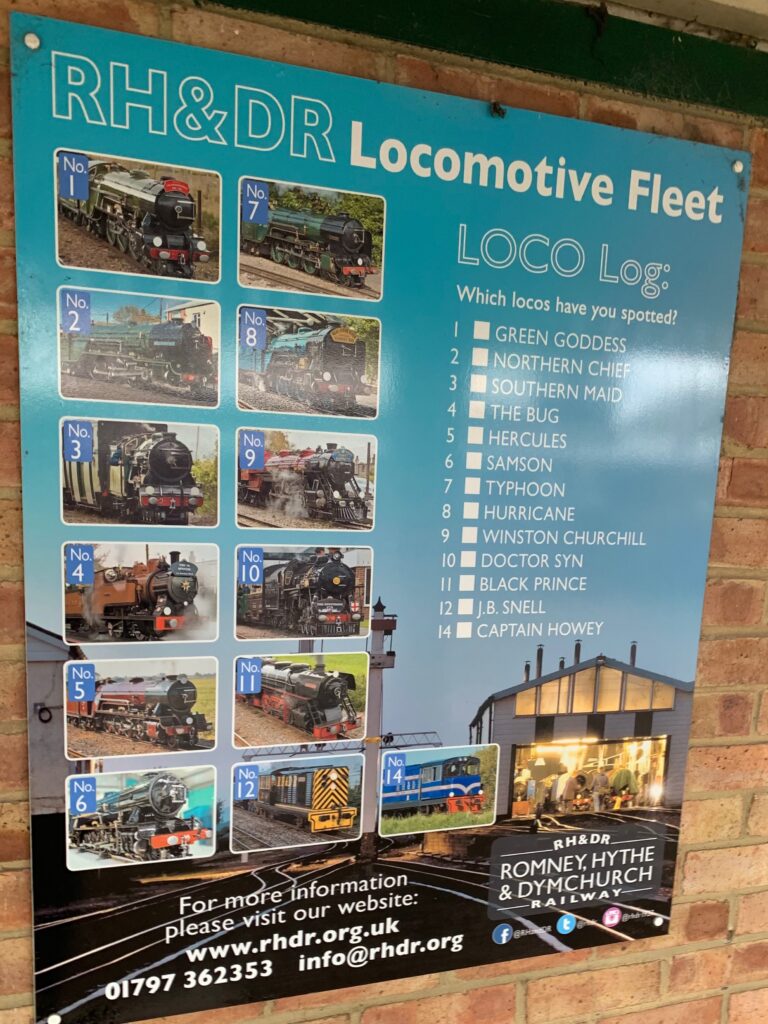
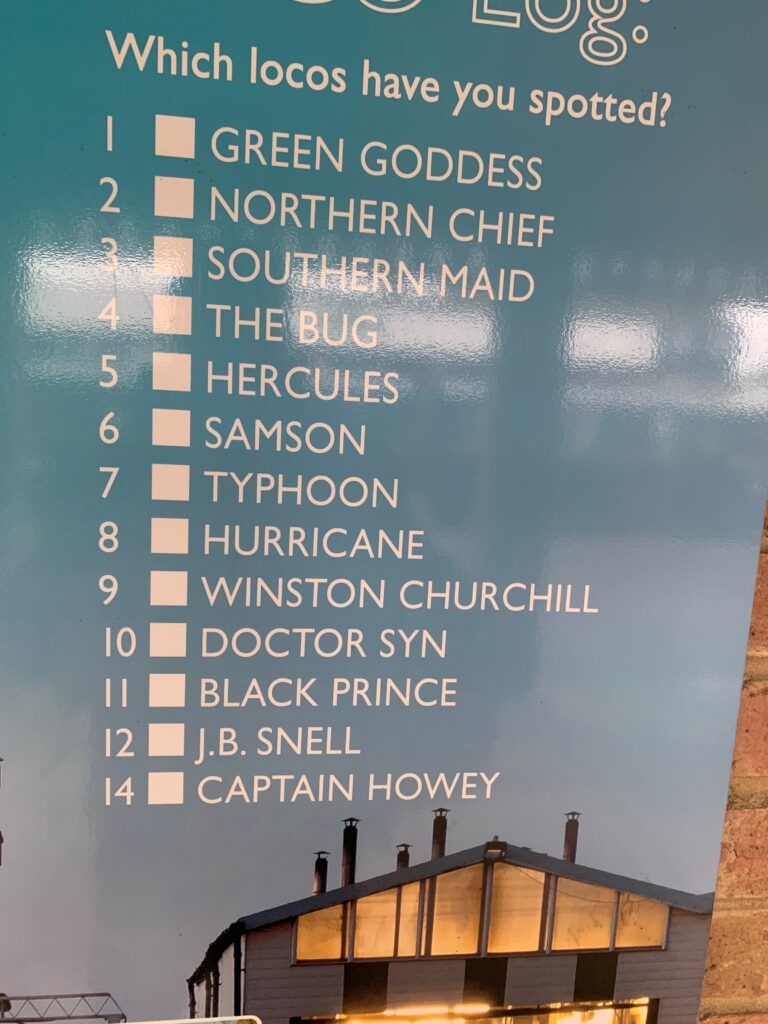


Very nice review. I visited in 2016 and it was the highlight of my trip. Oh, not to be nitpicking but the distance between the rails (gauge”) in Britain is 56 1/2 inches, not 56 inches. This is the same gauge used in the US.
As the story goes, this was the width between the wheels of Roman chariots, from back when Rome ruled Britain. Over the decades, ruts were worn into the dirt roads that were 4′ 8 1/2″ wide, so the first rails (1825) filled the ruts.